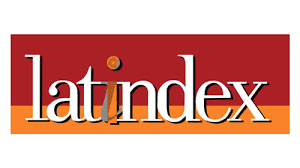Monitorización de cubiertas atirantadas = Monitoring covered straining
DOI:
https://doi.org/10.20868/ade.2016.3466Keywords:
Tirantes, cubierta, monitorización, transmisores, suspenders, cover, monitoring, transmitters.Abstract
Resumen
La implementación de un adecuado sistema de control de la tensión de los tirantes en cubiertas atirantadas se antoja esencial para preservar el correcto funcionamiento de los mismos a lo largo del tiempo. Tomando como ejemplo la cubierta del parque de carbones de la Central Térmica de As Pontes, se analizan cuatro casos de estudio: Modelo teórico, modelo indirecto de cuerda vibrante, modelo de pesaje con gato y modelo con sistema permanente de monitorización. Con el objeto de dar validez al sistema de monitorización instalado se efectúa un contraste de resultados a partir del análisis de los cuatro modelos. De este análisis se puede concluir que no sólo se trata del sistema más aproximado a los resultados esperables del modelo teórico, sino que sus ventajas funcionales llevan a recomendar su aplicación de manera generalizada. El sistema instalado, se fundamenta en la colocación de unas células de carga de galgas extensiométricas y en la implementación de un sistema de adquisición de datos inalámbrico. Se lleva a cabo una innovadora mejora tecnológica consistente en la colocación de unos transmisores de comunicación remota y en el desarrollo de una aplicación Android que permita el acceso directo a las lecturas y a la configuración del sistema.
Abstract
The implementation of an adequate system of stress control of the suspenders in covered straining is essential to preserve the correct functioning of the same over time. Taking as an example the cover of the coal park of As Pontes Thermal Power Station, four case studies are analyzed: Theoretical model, indirect model of vibrating string, weighing model with cat and model with permanent monitoring system. In order to validate the installed monitoring system, a results comparison is made based on the analysis of the four models. From this analysis we can conclude that not only is the system more approximate to the expected results of the theoretical model, but its functional advantages lead to recommend its application in a generalized way. The installed system is based on the placement of load cells of strain gauges and the implementation of a wireless data acquisition system. An innovative technological improvement is carried out consisting in the placement of a transmitters of remote communication and in the development of an Android application that allows the direct access to the readings and the configuration of the system.
Downloads
References
IBERINSA Ibérica de Estudios e Ingeniería S.A. (2010). Informe de Comprobación de las Péndolas de la Cubierta. Plan de Mantenimiento del Parque de Homogeneización de Carbones de la Central Térmica de As Pontes (Endesa).
IBERINSA Ibérica de Estudios e Ingeniería S.A. (1980). Proyecto de Ejecución de la Cubierta del Parque de Carbones. Central Térmica de Puentes de García Rodríguez (La Coruña). Endesa (Empresa Nacional de Electricidad).
Leonhardt, Fritz. (1977). Hormigón Pretensado: Proyecto y Construcción (Leonhardt). Primera Edición. Instituto Eduardo Torroja.
Downloads
Published
Issue
Section
License
Anales de Edificación does not charge authors for processing or publishing an article and provides immediate Open Access to its content. All content is available free of charge to the user or his institution. Users are permitted to read, download, copy, distribute, print, search or link to the full text of articles, or use them for any other lawful purpose, without prior permission from the publisher or author. This is in accordance with the BOAI definition of open access.
- Authors retain the copyright and grant to the journal the right to a Creative Commons attribution / Non-Commercial / Non-Derivative 4.0 International (CC BY NC ND) License that allows others to share the work with an acknowledgement of authorship and non-commercial use.
- Authors may separately establish additional agreements for the non-exclusive distribution of the version of the work published in the journal (for example, placing it in an institutional repository or publishing it in a book).
Unless otherwise indicated, all contents of the electronic edition are distributed under a Creative Commons license.












